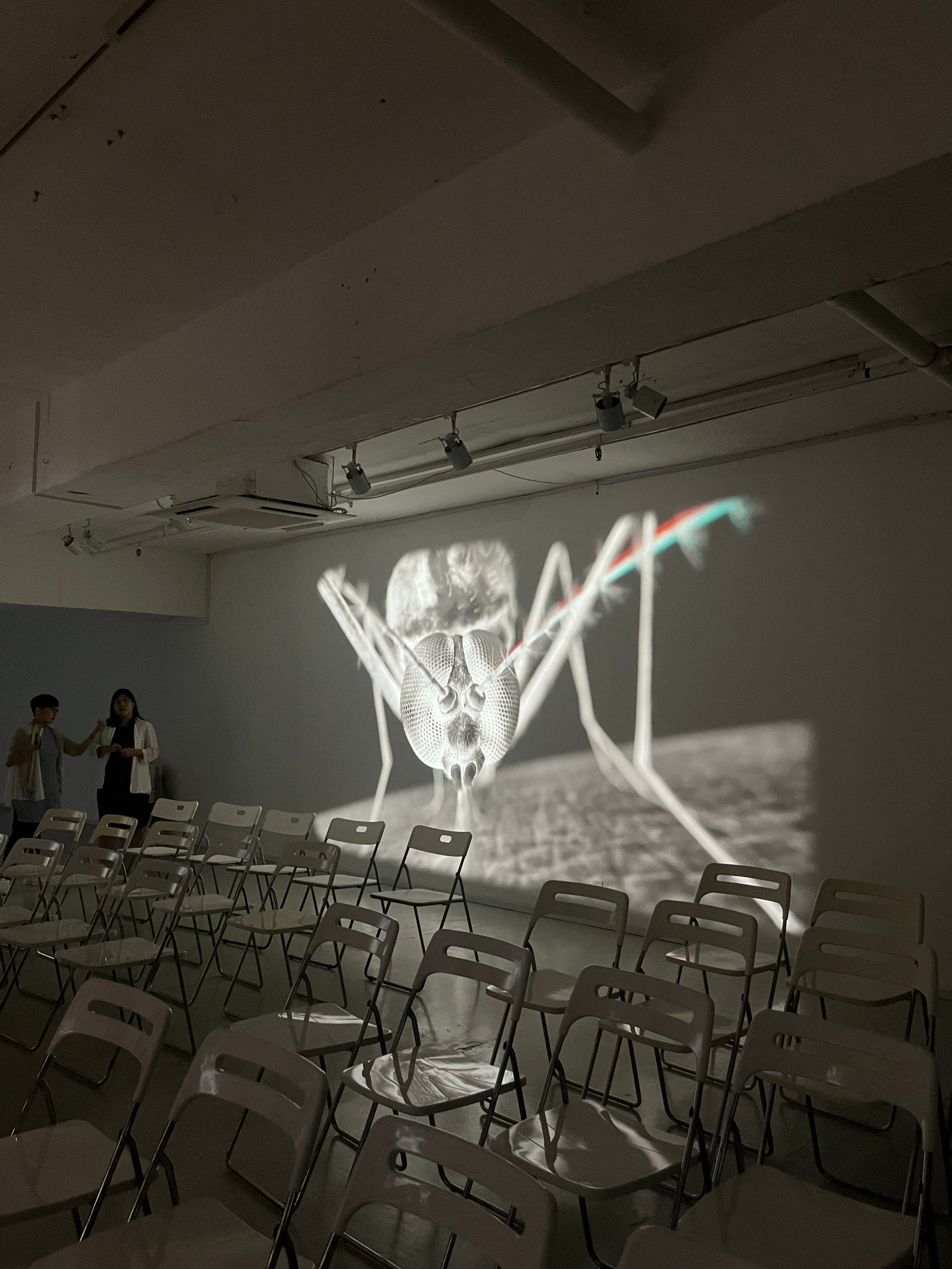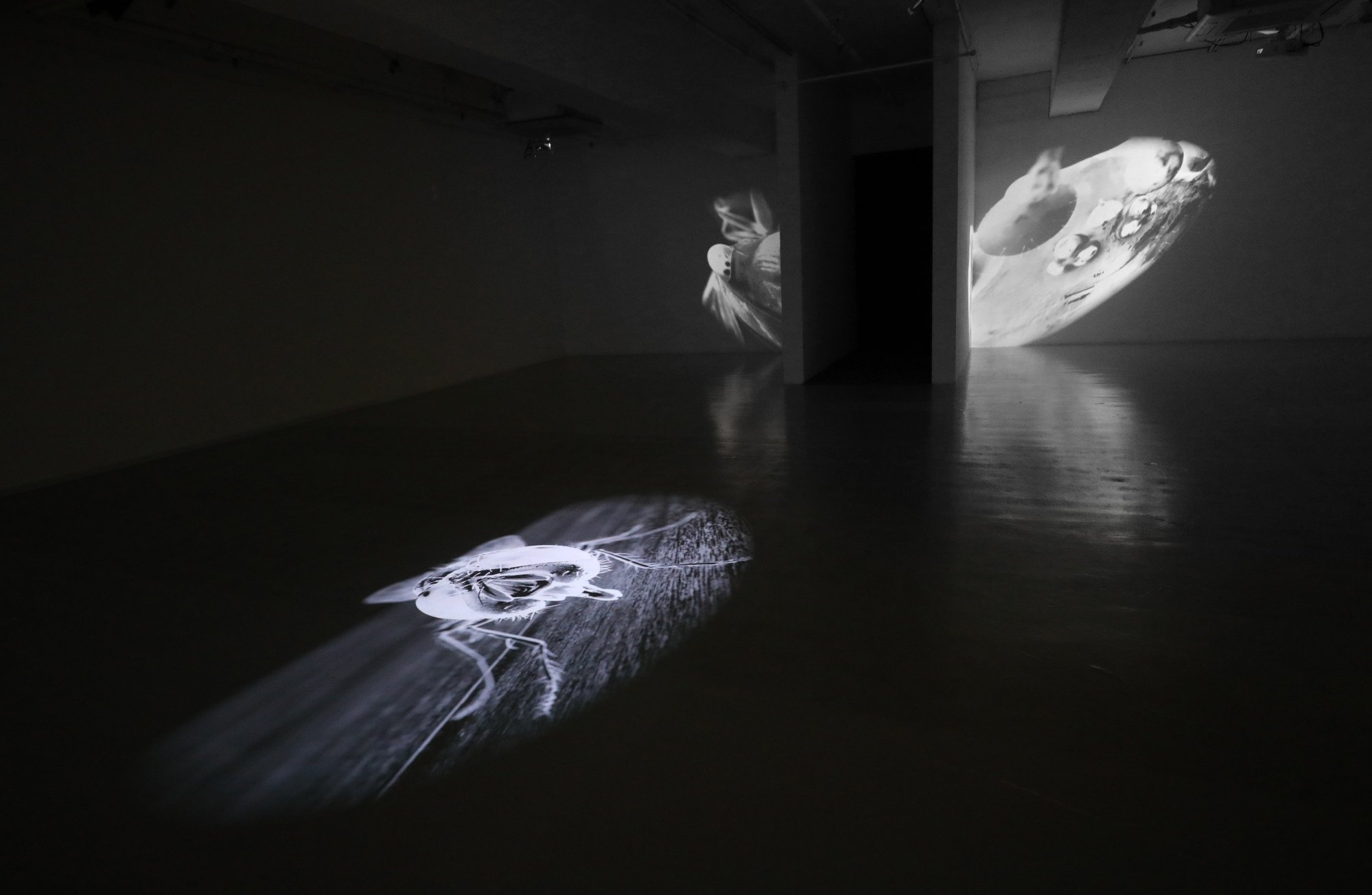As you walk into Osage Gallery in Kwun Tong, Hong Kong, you might notice a faint foul smell waft slowly up your nose. What is that, you think?
It is the smell of three bricks. All of which have been made entirely from compressed dead ants.
Titled Underneath the Feet, is Ground (2009), the bricks make up just one of many intriguing artworks in “Souvenirs de Choses” (“memories of things”), a solo exhibition at the East Kowloon gallery that features works by Hong Kong artist Leung Mee-ping.
Born in 1961, Leung is one of the most influential artists and art educators in Hong Kong, having taught for over 15 years at Hong Kong Baptist University’s art school and co-founded the non-profit art space Para Site.

Formerly arts editor of the Hong Kong Economic Times newspaper, Leung studied art in France and the United States, and later completed a PhD in cultural studies at Chinese University of Hong Kong.
Her artistic practice is typified by the use of materials collected in daily life, and their transformation into conduits for examining time, existence and people’s relationship with their environment.
‘Art for art’s sake’ in M+ museum show? No, this Chinese art is political
‘Art for art’s sake’ in M+ museum show? No, this Chinese art is political
The multidisciplinary artist is perhaps best known for Memorize the Future (1998-2015), a collection of 10,000 children’s shoes made of human hair from people of over 100 ethnicities; and her series Elsewhere, which consists of tea bags sewn together and which was prompted by a friend’s death.
Visitors to the exhibition will immediately notice a focus on insects, which Leung began observing when she moved into a flat in an old Hong Kong tenement building in the early 1990s after returning from France, where she studied painting at the Beaux-Arts de Paris.
The insects reflect humans, says Jeff Leung, who co-curated the exhibition with Vivian Ting. Just as the protagonist in Franz Kafka’s 1915 novel The Metamorphosis turned into an insect, the perspective of insects can help us better comprehend aspects of human lives.

In 2000, Leung Mee-ping created her first iteration of Ant Running End, a half-hour video that features ants trapped in a slide projector, struggling to escape before succumbing to their deaths; the video on display is a 2023 version. While the lifespan of worker ants typically ranges from a few days to a month, the heat from the projector shortens their lives to an hour or less.
This quiet, yet brutal, visualisation of inevitable death is a potent symbol of the tragedy of human lives. “Actually, ants’ ecosystem is similar to humans’ ecosystem,” Jeff Leung says of this work and the relationship dynamics of ants and people.
For Leung Mee-ping, dust, like insects, represents the ephemeral and fragile nature of life, as well as the accumulation of time. The smallest of microorganisms can be a reminder of the “shared destiny of seemingly unrelated communities in our times”, Ting says.

Leung’s video installation 2002.911 depicts where the Twin Towers in New York used to stand before the attacks of September 11. The artist took the video from a nearby building’s rooftop a year later, where she noticed a collection of dust in the corner.
“I asked the security guard about it, and he told me that since 9/11, they could never completely sweep away all the dust,” she says.

Believing the dust to be remnants of the 9/11 attacks, she collected it and had it examined – and indeed, the dust was shown to include human hair, fibreglass, paper fibres, carpet material and fragments of skyscrapers.
“Dust is the smallest thing that our eyes can see and detect,” Ting says. Its presence is also the most persistent evidence of events that have occurred, she adds.
The dust Leung collected was compressed into a cube, which can be seen in a separate, more enclosed section of the gallery. Here, there is an almost identical cube made with dust that Leung swept up from a church in France, a temple in China and another in South Korea. A three-video installation shows Leung sweeping in those locations.

The rest of the gallery space is occupied by projected insect animations, featuring six common household bugs and arthropods: spiders, cicadas, ants, houseflies, mosquitoes and fleas.
By magnifying them in areas where they are most likely to be found (in a corner, on a floor), Leung pushes viewers to observe acutely creatures that are usually ignored in daily life. As we witness their movements and lives, we are forced to contemplate the ways in which we view and understand the world.
“Souvenirs de Choses”, Osage Gallery, 4/F, Union Hing Yip Factory Building, 20 Hing Yip Street, Kwun Tong, Kowloon, Mon-Sat 10.30am-6.30pm. Until October 12.
Stay connected with us on social media platform for instant update click here to join our Twitter, & Facebook
We are now on Telegram. Click here to join our channel (@TechiUpdate) and stay updated with the latest Technology headlines.
For all the latest Art-Culture News Click Here
